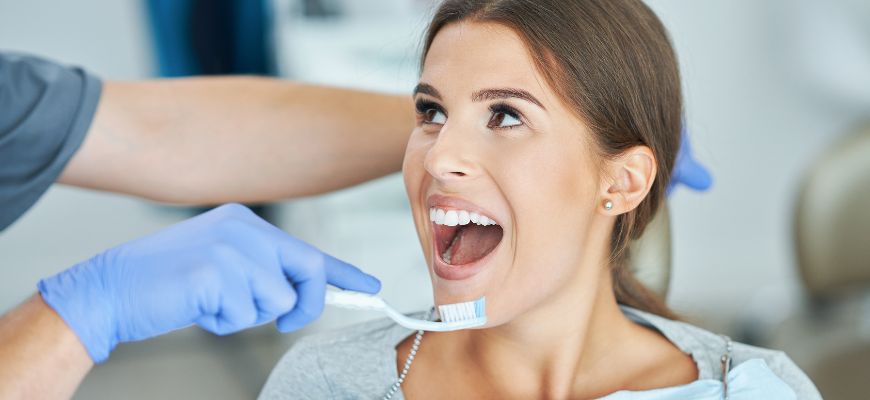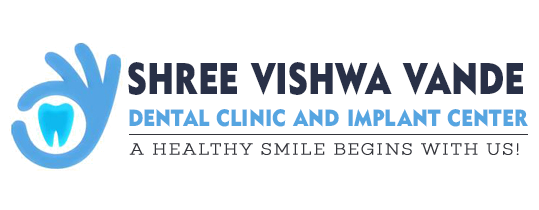How to Brush Your Teeth Properly

Taking care of your teeth and overall oral health is important for you!
Why?
Because maintaining a bright, healthy smile isn’t just about aesthetics; it’s also important for your overall well-being. Proper brushing helps prevent cavities, gum disease, and bad breath. Brushing your teeth correctly ensures your mouth stays fresh and your smile brightens.
In this blog post, our expert, known as the best dentist in Hubli, shares the proper tips on how to brush your teeth.
Choosing the Right Tools
Before we move into the technique, let’s talk about the tools you need:
- Toothbrush: Opt for a soft-bristled toothbrush. Soft bristles are gentle on your gums and enamel as well as effective at cleaning your teeth. An electric toothbrush can also be a great choice, as it does the brushing work for you.
- Toothpaste: Use fluoride toothpaste. It helps to strengthen tooth enamel and fight decay. Choose a flavor that you like to make brushing more enjoyable.
The Proper Brushing Technique
Now that you have the right tools let’s get into the technique:
- Position Your Toothbrush Correctly: Hold your toothbrush at a 45-degree angle to your gums. This angle helps the bristles reach the plaque that hides just under the gum line.
- Start Brushing: Begin brushing the outer surfaces of your teeth. Use gentle, circular motions to clean the teeth and gums. Avoid scrubbing too hard; brushing too aggressively can damage your gums and enamel.
- Move to the Inner Surfaces: After brushing the outer surfaces of your teeth, move to the inner surfaces. Tilt the brush vertically and make gentle up-and-down strokes to clean the inner surfaces, especially those in the back of your mouth.
- Brush the Chewing Surfaces: Don’t forget the chewing surfaces of your molars. Back-and-forth motion removes food particles and plaque from these hard-to-reach areas.
- Clean Your Tongue and Roof of Your Mouth: Bacteria can accumulate on your tongue and the roof of your mouth. Gently brush and floss your tongue and the roof of your mouth to remove any remaining bacteria and keep your breath fresh.
- Brush for Two Minutes: Brush for at least two minutes twice daily. Consider using an electric toothbrush with a built-in timer to ensure you brush for the full duration.
Don’t Forget to Floss
Brushing alone isn’t enough. Flossing daily helps remove plaque and trapped food particles between your teeth and the gum line. Use dental floss or interdental brushes to clean these tight spaces at least once a day.
Rinse with Mouthwash
After brushing and flossing, rinse your mouth with an antimicrobial mouthwash. Mouthwash helps to kill bacteria, reduce plaque, and freshen your breath. It’s a great final step in your oral care routine.
Taking Care of Your Toothbrush
Your toothbrush needs care, too. Rinse it thoroughly after each use and store it upright to allow it to air dry. Change your toothbrush every three to four months, or sooner if the bristles become frayed.
Common Mistakes to Avoid
To get the most out of your brushing routine, avoid these common mistakes:
- Brushing Too Hard: Using excessive force can harm your gums and enamel. Gentle brushing is more effective and safer.
- Skipping Brushing Before Bed: Brushing at night is crucial. It helps remove the day’s plaque and food particles, preventing them from sitting on your teeth overnight.
- Using the Wrong Toothpaste: Make sure you’re using fluoride toothpaste. Avoid abrasive toothpastes, which can wear down enamel over time.
Conclusion
In summary, brushing with good oral practice is essential for good oral health. These simple steps ensure your teeth stay clean, strong, and healthy. Remember, brushing is part of a complete oral care routine, including flossing, rinsing with mouthwash, and regular dental check-ups. If you need professional advice or a dental check-up, consider visiting the best dentist in Hubli for expert care.
So, take a few moments each day to brush your teeth properly. Your smile will thank you for it!




